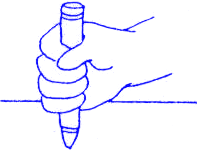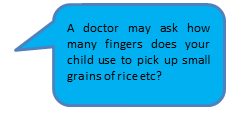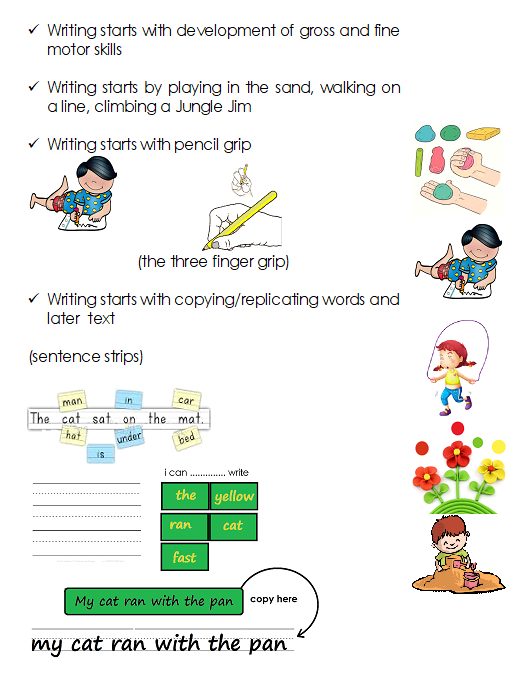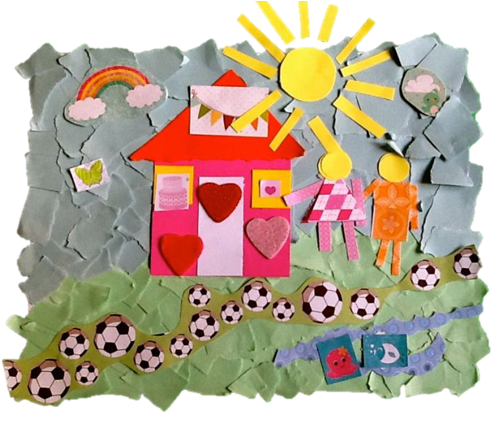Your basket is currently empty!
How We Learn to Write
Collect your activity book with the full instructions HERE
We learn to draw
But even before we draw we have to learn how to hold the writing/drawing instrument; pen, pencil, crayon, brush.
Pencil grip depends on your age

- Does this look familiar? Don’t despair. It is a typical grip – AGE: 1 year-18 MONTHS

- As your child starts to develop more control over hi or her shoulder and arm muscles, they will move on to hold a pencil with their fingers. With the Palmer grasp. Hand and fingers facing downwards
- AGE: 2-3 years old

From ages 3½ – 4 years old, your child may move on to hold the pencil with 3 fingers (tripod grasp with index, Static middle finger and thumb) or four fingers (quadruped grasp with ring finger added). Using the fourth finger can provide children with a little more support to hold the pencil. This is a static grasp, as the fingers do not yet move independently and movement is usually initiated from the wrist.
Putting pencils into little hands before they are ready may lead to immature and inefficient pencil grasps. Instead, engage your child in age-appropriate activities to help develop the upper body, shoulder, arm and wrist muscles. Activities such as jumping, crawling, scribbling on vertical blackboards, shoveling sand with a spade, playing with play-dough and doing arts and crafts are all great motor activities to lay the foundations for a good pencil grasp.
The age appropriate development as indicated above does not exactly apply to all children. This is normal after stimulation and exposure. Some children are only supervised when they enter formal school.
If an older child struggles with the pencil grip it may be because the child needs more muscular development. An energetic child might not be interested in sit-down activities, which is probably why printing comes slowly for them.

The good news is that much of what a child does in the preschool years (scribbling, crafts, working with playdough) naturally develops his skills. Even trying to colour within the lines is an important activity that builds strength and control in the forearm. For older kids, mazes and dot-to-dots are great practise for drawing straight lines, which they’ll need to master in order to form many letters. Even tying bows and laces and buttons stimulate and develop writing skills.
Children are drawn to colour. Therefore it is natural for them to reach out towards colourful items. Younger children should be inducted into writing with “fat” crayons that are soft and leaves a mark easily on paper. They love to see the result of the action. As the muscles develop they can use smaller coloring pencils.
Developing writing skills
Writing consist of lines and circles, in facts all objects are made up of lines and circles and muscular control. So be patient and be encouraging. Don’t despair if it does not turn out according to your expectation. All children are different and they develop at their own pace.
Here is where you can find the different activities (click)
Where does writing start…


A Kool way of learning is to play
We compare a learner with a blank slate. There is nothing written in his mind. We as parents and educators will etch information in his mind that may last forever.
So children will learn by copying. They will be informed by what is taught and to what he or she is exposed in his or her environment.
Playing with Clay
Sit around a table while the learner is playing with the clay.
Make something and he/she will do the same. This is the reason that children are often accused of copying. Where did we get most of your ideas from? We most likely saw it somewhere or got the idea from somewhere. You either duplicated (copied) the idea or you developed your own from an original idea. You will see this happening as your child “copies” from you.
At IMacademy we do not call it ”copying” we call it collaboration.
The composite picture (below) is made up of different elements that start with rolling the clay/play dough.
We soften the clay. This is a muscle exercise. You will see how the learner’s skill develops with practice. At first rolling/softening will be a challenge but it will soon develop into a simple movement without effort.

You can use biscuit cutters. Here are some of the instruments that can be bought in a craft shop or it may be found around the house.
| Developing Fine Motor Skills |
| Fine motor skills involve the small muscles of the body that enable such functions as writing, grasping small objects, and fastening clothing. When we refer to fine motor skills in the context of handwriting we are typically talking about the small muscles in the hands and fingers used for writing. |
- Cutting and tearing paper
- Threading beads
- Squashing paper
- Rolling clay / play dough
- Tying buttons
- Tying shoe laces
- Catching a ball
- Climbing up and down
- Walking on a line
- Skipping
- Hop scotch

The best way to introduce your kid to paper cutting craft ideas is to draw large, simple shapes on different pieces of colourful papers and get him to cut them out along the outline. You can then use these objects to create a scene and ask your kid to decorate it and then stick it on his room’s wall.


